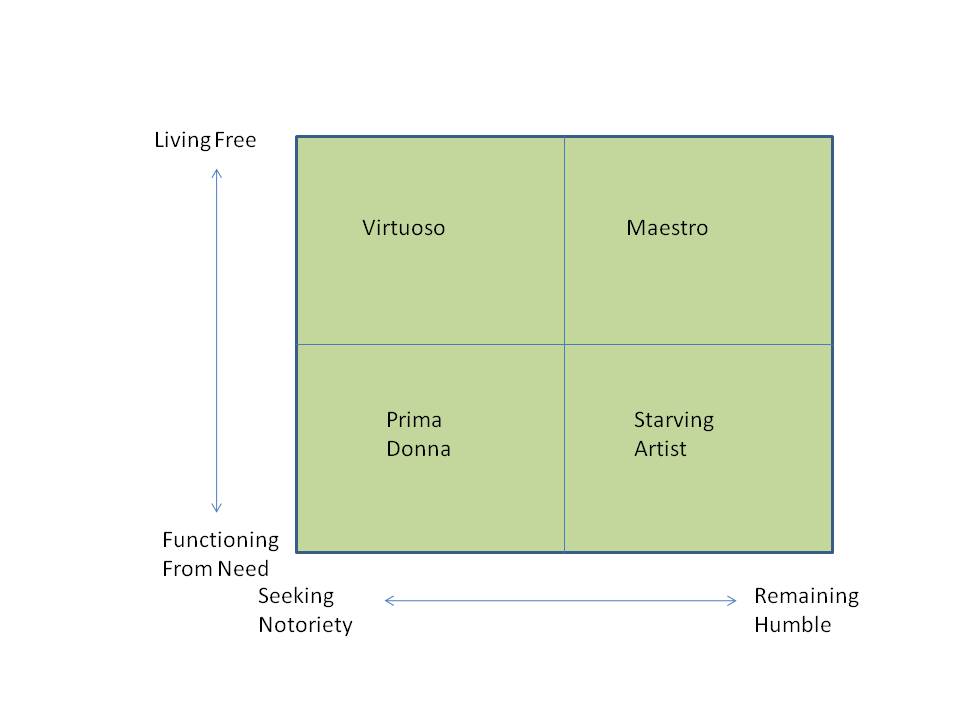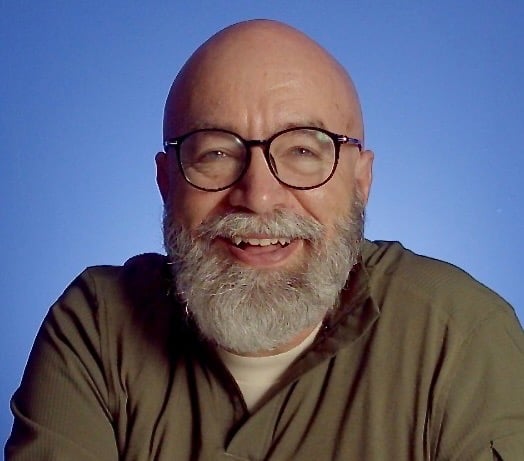(originally presented to a network of creatives, musicians, and artists gathered by Design Group International in 2010. This work is a taproot for what is now Maestro-level leaders.)

Examples in the bible of talented artists are few, and the most prominent stories are messy, although redemptive. David and Solomon are perhaps the two most famous artists recorded in the bible–David as a musician and Solomon as a poet. Both stories are of flawed and sensually driven people:
- prone to narcissism,
- with a rich interior life,
- given to passionate and symbolic displays of their faith.
One episode from the life of David was his disrobing and dancing as the ark of the covenant returns to Jerusalem. Solomon sponsored the lavish display of wealth as the newly constructed temple was dedicated.
Who they were as passionate creatives does not seem possible without their conversations with God when they were alone or in the darkness of the night. This brooding fed their creativity and vibrant faith, but it also fed their shadows. David, who wrote such beautiful psalms, also chased another man’s wife and plotted his death. Solomon became addicted to a life of excess thoroughly chronicled in the book of Ecclesiastes.
This pattern plays out repeatedly in history among creative spirits and among us who have a burning creativity today. Underneath these stories is a two-fold dilemma the Christian artist must face:
1. the artist must make a living but creating a living places constraints on creativity.
2. the artist wants to remain humble, but we need notoriety to make a living.
The stresses and strains of managing this two-fold dilemma can add to the natural brooding and restlessness from which creativity grows, but with potentially destructive results.
A lesser-known biblical figure alive when David danced before the Lord and when Solomon dedicated the temple, provides a better model for a lifelong body of artistry. His name is Asaph. Elements of his story are found in 1 Chronicles 16 and 25; and Nehemiah 12:27-47 (a loving tribute to his life and work). He and his descendants also wrote Psalms 73-83.
Asaph goes beyond showing his heart before the people as David and Solomon had done. He helps others participate in the artistry. He helps to develop and watch over a corpus of work that promotes not just participation but the ongoing welfare of others. Asaph’s artistry was not just a journey of self-explanation but one serving to express the heart of his people. His work was not built merely for his lifetime but serves as a baseline across centuries that influences our creative expression today. Just look at a hymn book and you will find many songs growing from what he wrote so many centuries ago.
Asaph’s example provides a guiding principle for the artist as they navigate their way through the dilemmas, and it is one I seek to apply in the creative aspects of my chosen vocation.
A RECENT EXAMPLE. I want to build upon Asaph’s example in the way I create and work. The well-known musician, Ken-Medema, and I performed at a fundraising gala. I told fairly unknown stories from the scriptures where outrageous generosity was displayed. He wrapped around these stories with a number of his songs and some improvised ones. The hilarious moment was when he turned Shebna’s chariot of Isaiah 22 into a little bit of Rodgers and Hammerstein: “the chariot with the fringe on the top.” People told us afterward that it was an event to drink in: their best ever.
Moments like these are problems for adrenaline addicts. This time, however, I can say it was enough. I gave my all, but I did not need to keep the adrenaline going. There was no restlessness. No crash. I did not need a group around me to deconstruct and relive the event. I was able to return to my hotel room, phone my wife for a virtual kiss goodnight, and drop into a peaceful sleep.
It has not always been this easy and will not always be this easy. But . . .drawing on Asaph’s example, I know it to be correct.
For that one night, it seemed, Ken and I were able to draw on our reputations to help those supporters celebrate what they had accomplished in living out their faith while also earning some money for our families. A balance between the dilemmas was struck. Ministry that will live long after our lifetimes was advanced.
PUTTING IT IN A DIAGRAM. Here is yet another way to think about these matters. Using a Johari window, we can see a path through the two-fold dilemma for the artist. The continuum of making a living or creating freedom marks the left side. Across the bottom is the continuum of notoriety versus humility. This diagram identifies four possible approaches for the artist. One does not have to think long to identify persons in each quadrant!
 The one who has enough notoriety that they are pretty much free to accept whatever commissions they choose is the virtuoso. Only a few arrive here, and often simply because they were the right person in the right place, noticed by the right people at the right time, in addition to their exceptional talent.
The one who has enough notoriety that they are pretty much free to accept whatever commissions they choose is the virtuoso. Only a few arrive here, and often simply because they were the right person in the right place, noticed by the right people at the right time, in addition to their exceptional talent.
The artist with a high degree of notoriety but who functions from their need for attention is a prima donna. Their art remains entirely self-centered and is a foil not for self-expression but self-attention.
The starving artist has no notoriety and feels they must accept whatever work they can. Often the work they find interferes with their ability to be creative.
In contrast to the other three, the maestro is known for their artistry and their investment in other artists, doing what it takes for the performers and audiences to enjoy what is being created. Maestro is most often used as a title for the conductor of the entire orchestra, bringing beauty from the collection of a community of artists, bringing notoriety to them all. The focus is on legacy and a corpus of their work, with each performance contributing to this whole.
So, living as a Maestro might be the appropriate metaphor for the creatives within religious communities. That metaphor is as rich for me as Steward, Ambassador, or Servant.
Experienced executives who need to plan for succession, legacy and future value can reach us at: www.maestrolevelleaders.com We'd love to connect you with others who are on this journey.
Tags:
Mark L. Vincent, Design Group International, Creative Leadership, Maestro-level Leaders, The Third Turn, The Third Turn Podcast, Maestro, Kristin Evenson, Third Turn Blog
June 9, 2022

Comments